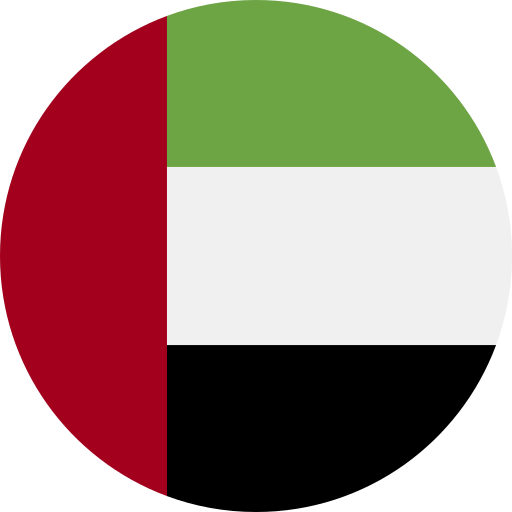Key Takeaways
- Distinct Pronunciation: Maghrebi Arabic features unique consonant and vowel transformations, such as the “qaf” sound becoming a softer “g,” which can challenge learners from other dialects.
- Grammar Variations: This dialect exhibits different verb conjugation and sentence structures, including a preference for past tense verbs and variations in subject-verb-object order.
- Cultural Influences: The integration of Berber languages, along with significant French and Spanish influences, enriches vocabulary and pronunciation, reflecting North Africa’s diverse heritage.
- Effective Communication: Understanding these pronunciation and grammar differences is essential for authentic engagement with native speakers of Maghrebi Arabic.
- Learning Opportunity: Familiarizing oneself with these nuances enhances language learning experiences and deepens appreciation for the complexity of this regional dialect.
Ever wondered why Maghrebi Arabic sounds so different from other Arabic dialects? You’re not alone. The pronunciation and grammar differences in Maghrebi Arabic can be a real puzzle for learners and speakers alike. With its unique twists, this dialect reflects the rich cultural tapestry of North Africa.
Overview of Maghrebi Arabic
Maghrebi Arabic, spoken in North African countries like Morocco, Algeria, and Tunisia, showcases unique pronunciation and grammar traits. This dialect differs significantly from Modern Standard Arabic and other regional varieties due to historical influences, including Berber languages and French colonialism.
You’ll notice that the pronunciation in Maghrebi Arabic often softens consonants. For example, a “qaf” sound may transform into a “g” or even disappear entirely. Additionally, vowel sounds can shift dramatically compared to other dialects, lending a distinct rhythm to speech.
Grammar also varies in this dialect. The use of verb forms may differ; for instance, you might find more frequent use of the past tense rather than present tenses in everyday conversations. Moreover, vocabulary incorporates many borrowed words from French and Spanish due to historical interactions.
Understanding these differences is crucial for effective communication if you’re engaging with speakers of Maghrebi Arabic. Whether you’re learning the language or working with voice talent who specialize in this region’s dialects, acknowledging these nuances enhances your ability to connect authentically with your audience.
Pronunciation Differences
Pronunciation in Maghrebi Arabic features distinct characteristics that differ from other Arabic dialects. These variations often present challenges for learners and speakers alike.
Consonant Variations
Consonant sounds in Maghrebi Arabic exhibit notable shifts. For instance, the “qaf” sound frequently transforms into a softer “g” or may even drop altogether. This change alters the pronunciation of common words, making them sound unfamiliar to speakers from other regions. Furthermore, consonants like “th” (ث) shift towards an “t” sound in many contexts, while emphatic consonants can soften considerably. These variations contribute to the unique rhythm and flow of spoken language across Morocco, Algeria, and Tunisia.
Vowel Changes
Vowel sounds also undergo significant transformations within Maghrebi Arabic. Short vowels tend to be more pronounced compared to their Modern Standard Arabic counterparts. Long vowels may experience diphthongization—a process where two vowel sounds glide together—creating a distinctive auditory effect that sets this dialect apart. In some cases, specific vowel patterns may even vanish entirely or merge with nearby sounds during casual conversation, adding complexity for non-native speakers trying to understand everyday speech.
Recognizing these pronunciation differences is essential for effective communication within the diverse cultural landscape of North Africa. Understanding how these nuances affect spoken interactions enhances your ability to connect authentically with native speakers and appreciate the rich linguistic tapestry of Maghrebi Arabic.
Grammar Differences
Maghrebi Arabic features several distinct grammar differences that set it apart from other Arabic dialects. Understanding these variations enhances communication and appreciation of the language’s complexity.
Verb Conjugation Variations
Verb conjugation in Maghrebi Arabic differs significantly from Modern Standard Arabic (MSA). You’ll notice that verbs can change based on regional influences, leading to unique forms. For instance, while MSA uses specific endings to indicate tense and subject, Maghrebi dialects may simplify these endings or even drop them altogether. This results in a more fluid conversation style. The verb “to be” often gets omitted entirely in the present tense, making sentences more concise.
Sentence Structure
Sentence structure also varies in Maghrebi Arabic compared to MSA. While MSA typically follows a Subject-Verb-Object (SVO) order, you might encounter different constructions in everyday speech. For example, questions often start with the verb rather than the subject. Additionally, using an adjective before its noun is common; so instead of saying “the big house,” you’d say “the house big.” These structural shifts contribute to a unique rhythm and flow in dialogue.
By familiarizing yourself with these grammar differences, you enhance your ability to engage effectively with speakers and navigate various contexts within the rich tapestry of Maghrebi Arabic.
Influence of Other Languages
Maghrebi Arabic showcases significant influences from various languages, shaping its unique characteristics. These influences stem from historical interactions and cultural exchanges within North Africa.
Berber Influence
Berber languages play a crucial role in shaping Maghrebi Arabic. Many vocabulary items, expressions, and phonetic features derive from Berber roots. For instance, certain words for everyday objects or local customs reflect Berber terms rather than standard Arabic equivalents. Additionally, the intonation patterns and some consonantal shifts mirror those found in Berber dialects. This integration adds richness to the dialect and reflects the deep cultural heritage of the region.
French and Spanish Influences
French colonialism has left an indelible mark on Maghrebi Arabic, particularly in Morocco and Algeria. Many French loanwords entered common usage, especially in areas like government, education, and technology. Terms such as “bureau” (office) or “école” (school) seamlessly blend into everyday conversations among native speakers.
Spanish influence is also notable in coastal regions due to historical interactions between Spain and North African countries. Words related to food, music, or maritime activities often contain Spanish origins. The combination of these elements creates a vibrant linguistic tapestry that makes Maghrebi Arabic distinct yet familiar to speakers of other languages.
These language influences not only enrich communication but also highlight the diverse cultural landscape of North Africa—an important aspect for anyone looking to understand or engage with this fascinating dialect more deeply.
Conclusion
Understanding the pronunciation and grammar differences in Maghrebi Arabic is essential for anyone looking to engage with this vibrant dialect. Embracing these nuances not only enhances your communication skills but also deepens your appreciation for the rich cultural tapestry of North Africa.
Whether you’re a learner or a speaker, recognizing influences from Berber languages and colonial histories can help you navigate conversations more effectively. By investing time in mastering these unique features, you’ll find yourself better equipped to connect with native speakers and explore the diverse regions where Maghrebi Arabic thrives.
Frequently Asked Questions
What is Maghrebi Arabic?
Maghrebi Arabic is a dialect spoken primarily in North African countries like Morocco, Algeria, and Tunisia. It features unique pronunciation and grammar that distinguish it from other Arabic dialects. The dialect reflects the cultural influences of the region, including Berber languages and French colonialism.
How does Maghrebi Arabic pronunciation differ from Modern Standard Arabic?
In Maghrebi Arabic, pronunciation varies significantly; for instance, the “qaf” sound often becomes a softer “g” or disappears entirely. Additionally, consonants may shift (e.g., “th” to “t”), while vowel sounds experience notable changes like diphthongization.
What are some grammatical differences in Maghrebi Arabic?
Maghrebi Arabic exhibits distinct verb conjugation patterns compared to Modern Standard Arabic. For example, it often omits the verb “to be” in present tense sentences and can have different sentence structures where questions start with verbs instead of subjects.
How do historical factors influence Maghrebi Arabic?
Historical interactions greatly shape Maghrebi Arabic. Berber languages contribute vocabulary and phonetic elements, while French colonialism has introduced numerous loanwords into everyday language usage in areas such as government and education.
Why is understanding these nuances important for learners?
Familiarizing oneself with the unique pronunciation and grammatical rules of Maghrebi Arabic enhances communication skills with native speakers. This knowledge allows learners to navigate various contexts more effectively within this culturally rich dialect.







